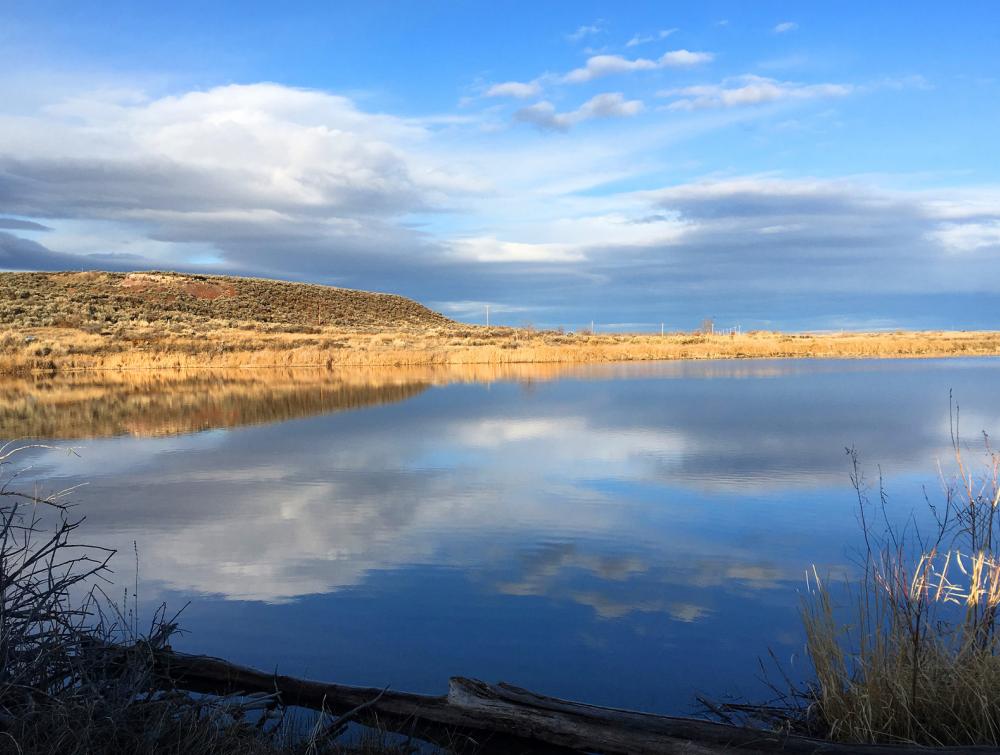Oregon extremists represent new face of land takeover mania

Brent Lawrence/USFWS
Militant extremists’ seizure of a wildlife refuge in Oregon is part of a land takeover movement that threatens America’s great outdoor legacy.
The armed occupation of buildings on Oregon’s Malheur National Wildlife Refuge by a group of radicals on Jan. 2 is an attack on land that belongs to all Americans.
The Oregon extremists—led by Ammon Bundy, the son of rancher Cliven Bundy, who famously led a similar public lands stand-off in Nevada—say their ongoing occupation of the wildlife refuge is intended to protest the federal government’s ongoing control of land and resources. The occupation was ostensibly prompted by the imprisonment of two ranchers for committing arson on federal public lands.
Bundy and his band of armed radicals claim the government has unfairly locked up these lands from citizen access. But public lands, whether they are refuges, national forests or BLM lands, actually belong to every single American citizen.
No one is entitled to demand or steal public lands
The government is required to manage our land for multiple purposes, including recreation, conservation, wildlife preservation and resource extraction. Ranchers often have agreements to graze their herds on our public lands, but none of them is entitled to exclusive access at the expense of public use.
Infographic: The American West loves public lands
The Oregon standoff and other public land takeover attempts have been used to suggest that westerners feel negatively toward public lands and the agencies that manage them, but polling tells a different story. More.
“The refuge is public land bought and paid for by the American people for public benefit and enjoyment. No one is entitled to demand it for themselves or steal it by force,” said Rep. Raul Grijalva (D-Ariz.), ranking member of the House Natural Resources Committee, in a Jan. 5 statement.
“The refuge is public land bought and paid for by the American people for public benefit and enjoyment. No one is entitled to demand it for themselves or steal it by force” -Rep. Raul Grijalva (D-Ariz.)
The American public should be aware that radicals like the Bundy group are not interested in the public, but rather in seizing public lands for their own personal gain.
“Every single one of us has a right to visit and enjoy our shared parks, refuges and other public lands without fear and without threat of violence,” said Jeremy Garncarz, senior director of wilderness designation campaigns with The Wilderness Society. “It is sad to see militant extremists blatantly disregard the American people and block access to our nation’s great outdoors.”
Part of a larger, more disturbing lands seizure movement
While it’s easy to dismiss the Oregon extremists as an isolated group of trouble-makers, they are part of a larger suite of attempts, both local and national, to seize more of America’s public lands for private gain.
More: Keep America’s public lands in public hands
At the local level, this has sometimes taken the form of armed standoffs or disruptive protests. In the 1990s, Nevada rancher Cliven Bundy infamously stopped paying fees to graze his cattle on land managed by the Bureau of Land Management, then ignored a court order and numerous warnings to remove his herd. In 2014, Bundy and a self-styled militia staged a tense weeks-long stand-off opposite federal officials who had been ordered by a U.S. District Court to remove the cattle. Concerned about the possibility of bloodshed, the officials were forced to back down. About a month later, hundreds of protesters in Utah—including Ryan Bundy, one of Cliven’s sons, who is currently occupying the refuge in Oregon—drove ATVs into an area called Recapture Canyon that is closed to motorized vehicles in a demonstration against federal management of public lands.
At a higher and even more concerning level, extractive industry lobbyists began waging a campaign to pressure state governments to seize public forests, refuges, wilderness and Bureau of Land Management lands so they can be privatized or auctioned for drilling, mining and logging. In 2015, this insidious idea spread to Congress, with anti-conservationists in the Senate and House assuming the land seizure mantle.
The radical notion of locking up public lands limits Americans’ freedom to enjoy the great outdoors. If the stated goal of these extremists is achieved, we could lose access to treasured parks, wilderness, and national monuments; we may find ‘no trespassing’ signs and barricades in these places instead of open trails and scenic views.
We can’t give up on public lands collaboration
The Oregon extremists’ stunt thwarts meaningful, inclusive discussions that need to take place about how to manage and take care of our shared public lands.
Today, public land agencies work to balance the many uses of public lands to best meet the current and future “multiple use” needs of the American people, including recreation, resource use, wildlife conservation and archaeological preservation. These agencies are bound to follow longstanding laws designed to protect the public interest.
There is a long history of ranchers, land owners, and federal agencies working together peacefully to best manage our nation’s public lands. For example, The Wilderness Society and many other conservation groups, county officials, ranchers and landowners, the business community and outdoor recreationists have collaborated for over a decade to find solutions for public land management issues in nearby Owyhee County, on the Idaho/Oregon border.
The Owyhee Initiative collaborative meets several times a year to thoughtfully discuss controversial issues such as range-land fires, wilderness management and public access issues. The members of this group are united in their commitment to resolve potential conflicts by working together to find solutions upon which different sides can agree.
We must return to the civil conversations that lead to positive solutions on our public lands—not by threating violence and not by taking up arms and bullying the public off of the lands that rightfully belong to all of us.
